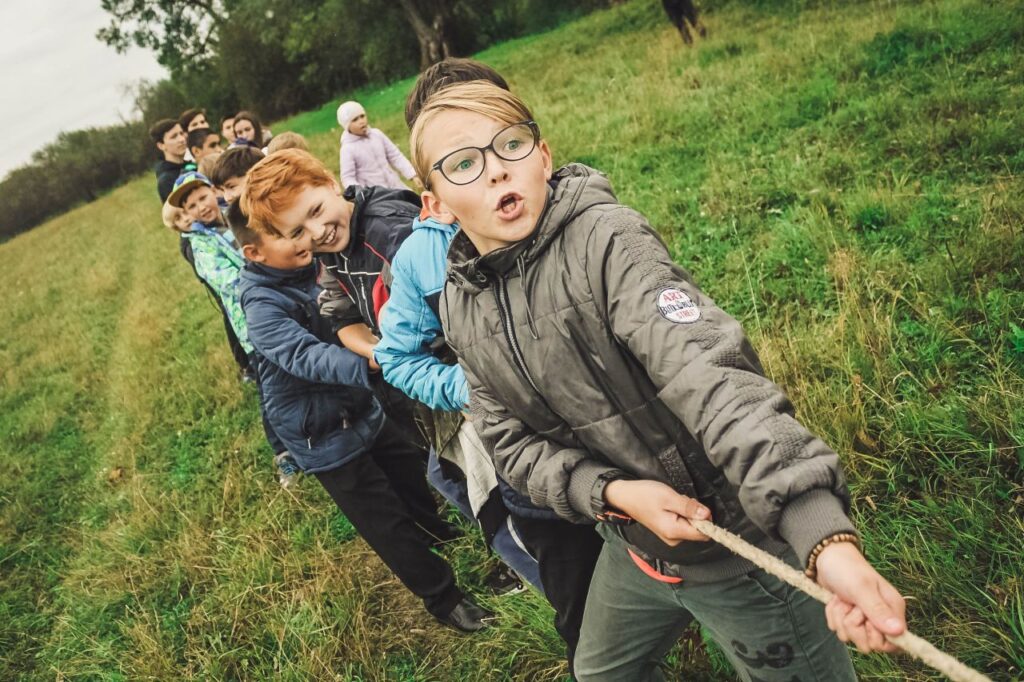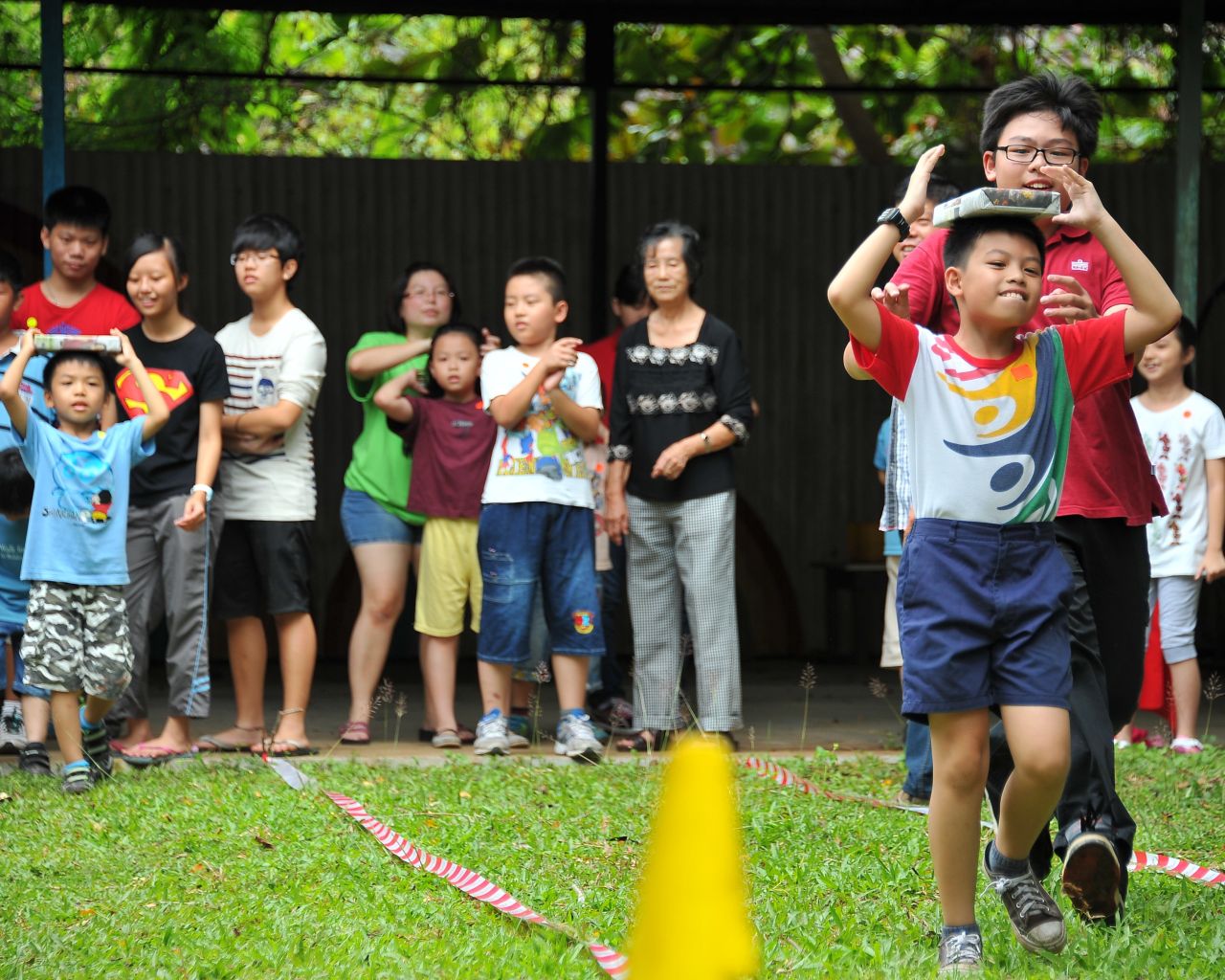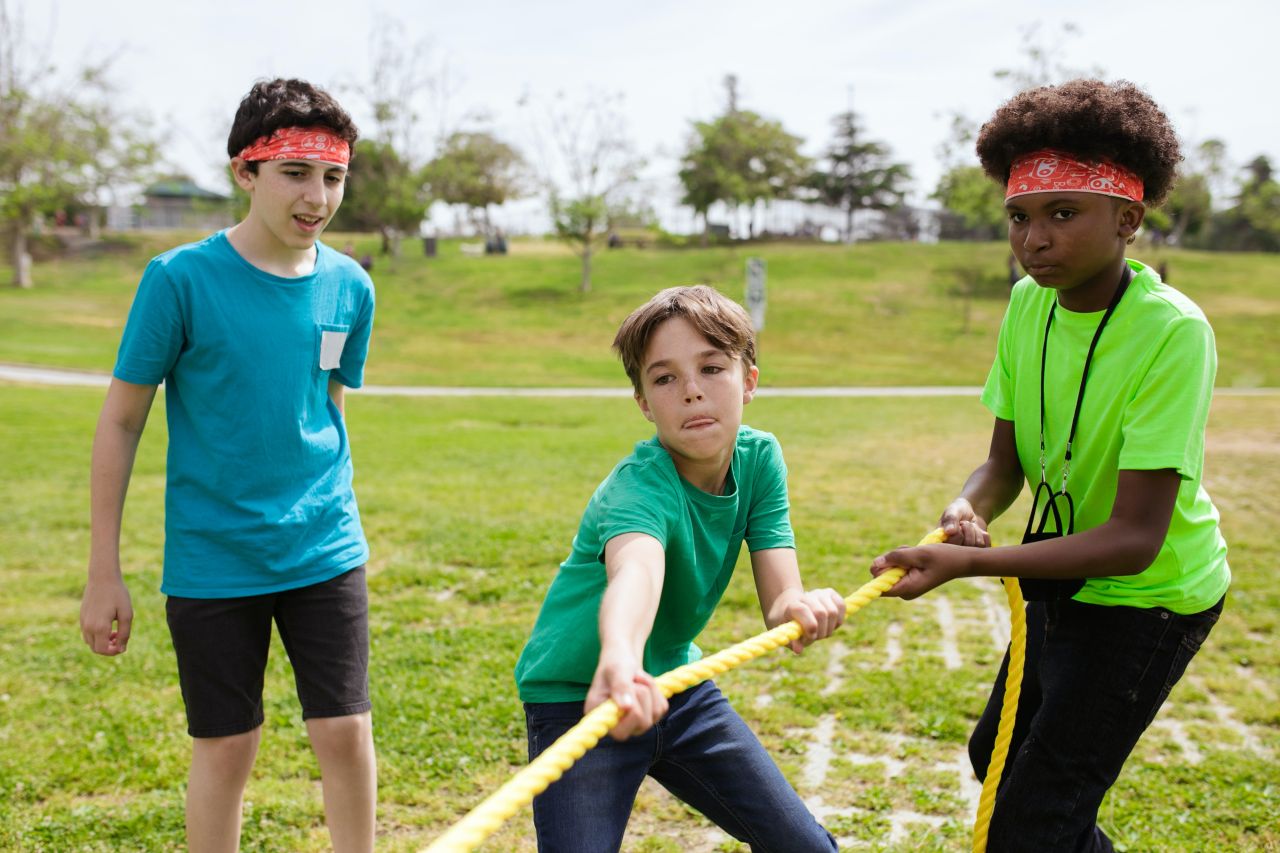Are you looking for ways to ignite your student's learning? If so, you may want to try using gamification. Gamification is turning tasks into games to make them more fun and engaging. This post will discuss some of the benefits of using gamification in the classroom and tips for getting started. So, if you're ready to add a little excitement to your student's learning experience, keep reading!
Gamification is used in customer loyalty programs for credit cards and memberships in the business world: Spend the money and invest time in the business's app and products to earn discounts and status upgrades. Everyone benefits at their own pace.
In education, gamification is intended to transform traditional lessons into an enhanced learning experience where students explore and practice content, earning badges and status benefits. These might seem irrelevant, but the true rewards come from the students' internal drive to study content, gain depth of understanding, and master material that leads to badges, achievements, and status.
Success comes not from the rewards but from how the learning journey is crafted for students to travel. Combining game mechanics with an intentional exploration of aligned content will result in students' participating willingly.
3 Keys To Quality Gamification Experiences
Every Student Can Reap The Rewards Of Badges, Achievements, And Status By Completing All Required Tasks. Gamification provides powerful experiences that are non-competitive play to facilitate learning. Students invest time in and outside the classroom to complete the challenges, such as doing extra readings, video viewings, and practice activities. The more time spent and content consumed can only improve the depth and breadth of students' knowledge and skill mastery. Such investment by all students is time well spent and should be rewarded with badges and work-related status.
Limiting access to awards to just one winner or the top finishers undermines the underlying intent of gamification: all students grow content knowledge and skills through active participation. It's more important to have as many students as a possible benefit at their own pace and build learning and self-accomplishment. Allowing only a few to earn rewards demotivates students who either believe they cannot compete or experience frustration at having invested time toward the goal, only to fall short because someone else edged them out. When the focus is on who wins, learning becomes the biggest loser.
Gamification Offers Renewable Status And Privileges Through Self-Directed Learning. Some say that giving out rewards for doing work creates the wrong type of motivation, whereby students become more focused on the treats and prizes than on the learning. This issue is dependent on a combination of the type of work students must do and the rewards that are earned. Gamification uses badges and achievements to encourage students to complete meaningful tasks that improve their content knowledge and skill levels. The tasks must align with the curriculum expectations.
Status and privileges earned should relate to empowering student agency about their approach to learning. The following are some examples:
- Study passes: Choosing where they sit or access to study in the hallway, library, or other school locations can be a powerful reward. For specific lesson activities, students earn the right to pick their work environment and choice of partner. In the latter case, they can only choose from students who have also completed this badge.
- Homework passes: Students who have invested additional study time into a subject may not need formal practice. This pass is only good for the current unit. Or they earn the ability to complete a comprehensive study packet that covers all material to be addressed and bypass some of the standard homework.
- Opting out of a test: Students can complete alternative work similar to curriculum compacting. The tasks are specifically aligned to the unit outcomes and give students a different way to show their learning. Students complete a badge where they demonstrate strong organisational and self-discipline skills.
You must renew all such badges and achievements each marking period or semester. Once earned, these statuses are privileges that can be removed if abused. If they are lost, students may reapply by completing the tasks to earn back the status, demonstrating responsibility and accountability.
Gamification Promotes Goal Setting And Student Agency. If we want students to own their learning, they need to choose the badges and achievements they want to complete. Renewable options empower students to explore which options appeal to them. There should be a series of tasks that composes the badge or achievement, including some options to choose the pathway that appeals to them.
For example, earning a homework pass might include readings, videos, and skill practice from which they choose from a list of what to complete. The study pass may require a written or recorded reflection about the importance of acting responsibly in the hallway or study location outside the classroom. The power of options empowers students to make the best choice that suits them and holds them accountable for their choices.
Gamification can have a greater impact on learning than even its cousin game-based learning. Whereas a game can have a beneficial impact on one lesson activity, gamification done well is infused throughout the entire lesson and unit of study. In addition, it maximises participation because everyone can win.
Gamification empowers students with the ultimate choices when setting goals for what badges and achievements they want to complete, leading-learners to build skills for self-reliance and self-control.
Frequently Asked Questions
- Giving points for meeting academic objectives.
- Giving points for meeting procedural/non-academic objectives.
- Creating playful barriers.
- Creating competition within the classroom.
- Comparing and reflecting on personalised performance.
- Adapt old-school games for classroom use. Scavenger hunts, bingo, dice games, Connect Four and Scrabble have been around for decades and can be adapted for classroom learning.
- Play digital games.
- Create a quest.
- Battle it out with a boss battle.
Enter gamification, a learning technique that uses activities and rewards to promote student engagement. When used to promote a love of learning, this strategy can help students become active and motivated learners.
Gamification integrates game elements like point systems, leaderboards, badges, or other elements related to games into "conventional" learning activities to increase engagement and motivation.
The gamification of learning is an educational approach that seeks to motivate students by using video game design and game elements in learning environments. The goal is to maximise enjoyment and engagement by capturing learners' interest and inspiring them to continue learning.
Gamification Best Practises To Spark Student Attention And Ignite Interest
Make Learning A Journey Worth Undertaking
Unlocking student motivation isn't a fail-safe process. Each learner has their own set of internal motivators and unique attention spans stimulated by certain aspects of coursework and not by others.
One of the best ways to utilise gamification to reach the highest number of students possible is to introduce your subject matter and course elements in a way that turns the learning process into an epic journey worth undertaking.
Start your course curriculum with low-stakes (or no-stakes) quizzes that assess a learner's preexisting knowledge. Then, use little microlearning games to pique their interest straight away and correlate what they already know to what they are about to learn. Finally, build an early gamification bridge to capture their attention and watch their intrinsic motivation do the rest.
Turn Learning Into A Digital Easter Egg Hunt
One of the key motivators for student success has always been providing practical course subject matter to them and rewarding them for expanding their knowledge base to meet the challenge.
From a gamification perspective, one way to augment this approach would be to intersperse helpful Easter eggs and hidden study/context clues in certain parts of the course that will help the student in future assessments (and study games).
Please give them the keys to being a learning explorer. Allow them to play within a normally boring space of lectures and content retention. By giving them a space to move, learn, and explore, you can spark motivation and a desire to keep engaging in the course content.
Tell A Story To Get Students Ready To Go
The best role-playing games open things with an engaging story arc that sets the scene for a player's journey.
You can use this same approach in online course structuring. For example, create an introductory video that engages students and gets them thinking about their coursework as the narrative of a good story.
Change certain terms in your course lexicon (such as assignments to challenges) to immerse students in the gamification and narrative of things rather than the rigidity of a normal course. Get them to approach your class like a good story, and they'll keep reading (and playing) along at their own pace.
Set The Scene
The game environment and storytelling are at the heart of gamification and can engage perceptual arousal. All good games have an engaging introductory story or character backstory that sets the stage for what is to come. Utilise the narrative for storytelling to inspire, engage and motivate students to take further action. Setting the scene allows you to introduce students to the course narrative and simultaneously onboard students to the course structure. The narrative should come first, and planning for authentic challenges can commence.
Example
I introduced my students to the course narrative by changing standard terminology like students to recruits and assignments to challenges. It's important to note that simply changing terms in a course is not gamification. However, if changing terms fit into your course narrative and is embedded throughout the course, then you're on the right track. You can use a course introduction video to set the scene for your course narrative:
Start The Journey
To stimulate an attitude of inquiry, start by engaging students in a naïve task to engage them in learning through a quest. For example, you would view coaching sports as designing game-like drills or practising situations the athletes encounter in competition. This type of activity focuses on learning being a journey. So that students don't only participate in learning activities to demonstrate learning, but in some cases to build understanding and skills over time. This concept of a learning journey allows instructors to leverage microlearning. Microlearning is a good fit with gamification as it structures smaller chunks of content repetitively, increasing long-term comprehension.
Example
I initially engaged students in an academic integrity unit to start the course, but students could earn a valuable tool by completing that module: the quiz key tool. This tool was represented as a digital badge that students could earn and allowed them to "unlock" quizzes in the course for unlimited attempts. Rather than serving as assessments, the quizzes in my course served as low-stakes microlearning opportunities to reinforce content comprehension as part of their learning journey.
Allow For Modding
When we think of learning as a game, we can design our courses to maintain student attention throughout the semester. Planning a student-centred course design allows flexibility for mod projects or individualised experiences that allow students to take ownership of their learning. One way to simultaneously allow for modding and provide variability for students is to create Easter eggs which are hidden messages or secret features embedded in a game. Students learn better when it doesn't come easy, and they must problem-solve through desirable difficulties; Easter eggs can provide helpful hints or cheats to help students progress when they get stuck.
Example
I used weekly case studies as learning activities. Several of which provided desirable difficulties for the students, which required them to put in significant effort and problem-solve to complete. To help students with their case study challenges and add some variability, I hid Easter eggs in the form of bug icons linked to clues for the game narrative in the course and contained hints on how to complete more difficult portions of the case studies. In addition, students could earn a point for finding and sharing the clue in a class forum that they had found the clue. Having students share that they found the clue helped ensure that students who weren't familiar with the concept of Easter eggs would also remember to search for the clues.
Turn Lacklustre Lessons & Tedious Tasks Into Fun Quests
Adding game-based learning or assignments boosts enthusiasm and engagement. Develop a backstory or theme to connect your learning objectives for a fun way to add context for students to approach the material. Include themed graphics and references in presentations, materials and room decorations.
Try tying in a real-world problem related to the lesson into your game strategy, and set user-friendly, exciting quests for students to complete. It may look like a series of missions such as completing activities, quizzes or projects related to lesson content.
Challenge students to solve problems in different on-theme scenarios and award experience points with each achievement completed. Brainstorm creative ways to integrate quests into lessons throughout the course.
Add deadlines for a sense of urgency, such as asking students to submit an assigned task or response within a time limit or offering prizes and giveaways to the first 50 responders.
Online game creation tools can also make it easy for anyone to create simple and fun digital educational games with drag & drop tools - no coding required.
Create Stories & Characters
Gamification empowers students to get inventive and innovative, especially with creative constraints! Setting challenges and boundaries helps students stay focused and engaged.
With a backstory or theme in place, immerse students in the learning experience by inviting them to choose a role and create an avatar to spark creativity in a lesson. It is a great way to get students more invested in the overall educational journey.
Encourage costumes illustrations and build flexibility for students to make decisions for their characters in an interactive learning environment.
Ignite Competitive Spirits With A Live Leaderboard
Like in video games, most students are highly motivated by a sense of competition. Just about everyone wants to see their name or avatar on top of rankings, and a leaderboard provides the perfect space for it!
Fueling this competitive fire encourages students to participate more. A Leaderboard, updated in real-time with involvement data, empowers them to watch their scores and position increase as they complete required extra credit assignments. Can't climb a mountain if one doesn't exist!
Empower Students To Level Up
Moving up levels is an exciting gaming feature that you can apply to education to keep students engaged and motivated! Create ongoing milestones throughout a unit or program to give students the ability to level up continually as they achieve set accomplishments.
Allow a student to move from 'Scribe' to 'Scholar' after completing several assignments or a specific challenge.
Conclusion
Gamification is simply adding game-like features to non-game environments; however, to be most successful, you should embed gamification strategies into online courses intentionally focusing on student learning. Gamification is a tool and shouldn't just serve as a flashy add-on.
Utilising these strategies can spark student attention and ignite interest in building intrinsic motivation to learn the course content. These gamification strategies also pair well with evidence-based instructional strategies that have been shown to improve student learning. In any case, learning in an online course can be designed to be a fun and intrinsically motivating game.


